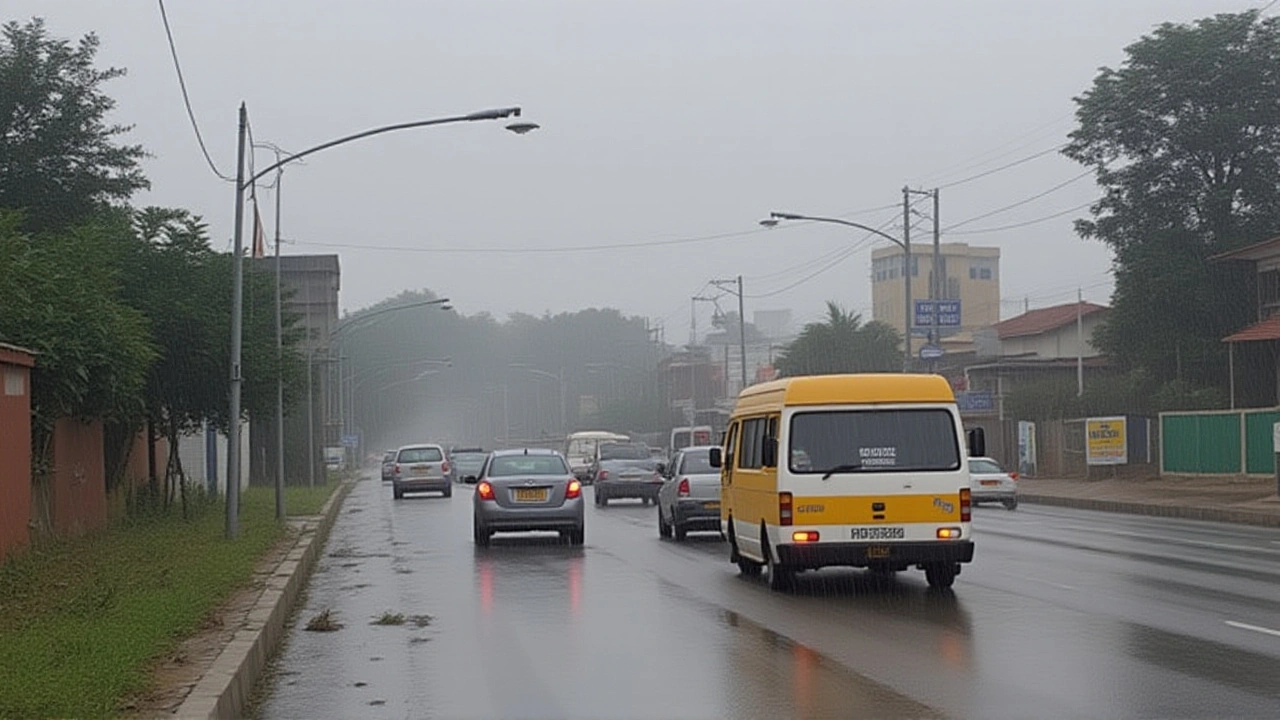Kenya Weather Forecast – Real‑Time Updates and Climate Insights
When checking the Kenya weather forecast, the short‑term prediction of temperature, rain and wind for Kenya's regions. Also known as Kenya weather prediction, it helps farmers, commuters and tourists plan their day. Stay ahead with the latest Kenya weather forecast details and see how it fits into the bigger picture of East African climate.
The East African climate, a mix of tropical, temperate and arid zones driven by the Indian Ocean and the Great Rift Valley sets the stage for daily forecasts. Understanding this climate means knowing that coastal humidity, highland coolness and savanna heat all coexist. Those patterns directly shape the rainfall patterns, the seasonal distribution of rain across Kenya, from the long rains in March‑May to the short rains in October‑December. When the forecast mentions a “rainy spell,” it’s reflecting these long‑term cycles.
How Forecasts Are Built and What They Mean for You
Accurate forecasts rely on meteorological models, computer simulations that blend satellite imagery, ground stations and historical data. These models generate the temperature range you’ll see in Nairobi, Mombasa or Eldoret. For instance, a model might predict a high of 28 °C in Nairobi with a 40 % chance of isolated showers. That prediction is a direct result of blending sea‑surface temperatures, wind shear and local topography.
Every forecast also includes a confidence level. When the outlook says “moderate certainty,” it tells you the model’s agreement is about 60‑70 %. Low certainty means you might want to keep an eye on updates, especially during the transition months of April and November when the short and long rains overlap. This transparency lets you decide whether to carry an umbrella or postpone outdoor work.
Beyond daily highs and lows, the forecast gives you wind direction and speed. In the highlands, a southerly wind can bring cooler air, while a northerly gust often signals warmer conditions in the lowlands. Knowing the wind helps pilots, kite‑surfers and even pastoralists who monitor dust storms.
For agriculture, the forecast’s rainfall estimates are gold. A farmer in the Rift Valley checks the projected millimeters of rain before planting maize. If the forecast shows a deficit, they might switch to drought‑tolerant crops or adjust irrigation schedules. This link between forecast and field decisions illustrates why reliable weather data matters.
Urban dwellers rely on the forecast for traffic planning. A sudden downpour in Nairobi can cause gridlock, so commuters watch the rain chance to pick alternative routes. Similarly, tourists use the outlook to schedule safari drives, beach days or mountain hikes, aligning their plans with the most likely weather windows.
Technology has sharpened these predictions. New satellite constellations provide real‑time cloud motion vectors, feeding into models faster than ever. Mobile apps now push alerts the moment a storm approaches, cutting the lag between forecast release and on‑ground impact.
Even though forecasts are improving, they still have limits. Micro‑scale events like isolated thunderstorms can pop up without a model warning. That’s why many services include a “nowcast” – an ultra‑short‑term update based on radar loops. Mixing the nowcast with the broader forecast gives you both a big picture and a quick‑look check.
Climate change adds another layer. Over the past decade, Kenya has seen a rise in average temperature by about 0.2 °C per year and more erratic rain patterns. Forecast agencies now embed climate‑adjusted baselines, so when they say “above‑average heat,” they’re comparing to a moving target rather than a static historical norm.
For the curious, digging into the forecast’s source data can be rewarding. The Kenya Meteorological Department publishes raw station readings, and many independent sites share their model outputs. Comparing multiple sources helps you spot outliers and understand why one forecast may be a few degrees cooler than another.
In short, the Kenya weather forecast ties together satellite data, meteorological models, regional climate knowledge, and on‑the‑ground observations. It impacts farming, travel, aviation, daily commutes and even long‑term climate awareness. The collection of articles below dives deeper into each of these angles, offering practical tips, trend analyses and real‑world stories that show the forecast in action.
Ready to see how today’s outlook shapes tomorrow’s plans? Browse the posts for detailed breakdowns, expert commentary and step‑by‑step guides that turn raw numbers into useful decisions.
KMD Warns of Continued Rain, Cold Spell Across Rift Valley (July 22‑28)
Kenya Meteorological Department warns of rain, cold and cloudy conditions across the Rift Valley from July 22‑28, urging farmers and communities to prepare for showers and possible hailstorms.

